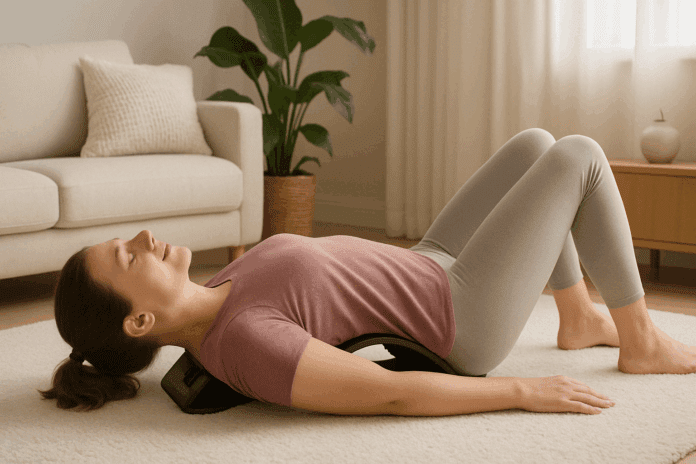Lower back pain is one of the most common musculoskeletal complaints among adults, affecting nearly 80% of people at some point in their lives. For those seeking non-invasive and drug-free approaches to relieve this discomfort, a back stretcher for lower back pain can offer a compelling solution. These devices, which come in various forms and materials, are designed to decompress the spine, stretch tight muscles, and enhance circulation. With so many options on the market, however, selecting the best back stretcher for lower back pain requires a thoughtful, evidence-informed approach to ensure both safety and effectiveness.
You may also like : Best Stretches for Sore Legs and Tight Thigh Muscles: How to Relieve Upper Leg Pain Safely and Naturally
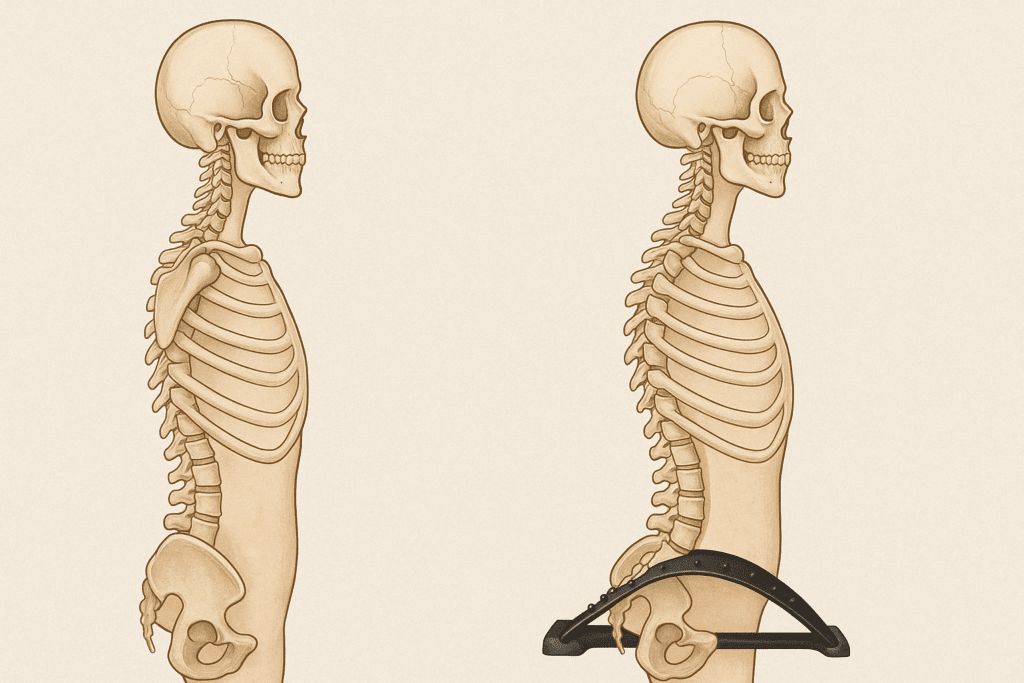
Understanding the Role of a Back Stretcher in Spinal Health
To understand how a back stretcher functions, it’s important to first consider the biomechanical stresses that contribute to lower back pain. Prolonged sitting, poor posture, muscle imbalances, and repetitive strain can all lead to spinal compression and soft tissue tension. Over time, this compression limits blood flow, tightens muscles, and can even alter the alignment of the vertebrae.
A back stretcher for lower back pain is engineered to reverse these forces by gently elongating the spine and relaxing the paraspinal muscles. When used consistently and correctly, it can promote the natural curvature of the lumbar spine, reduce nerve impingement, and foster a greater sense of bodily awareness. For individuals managing chronic or intermittent pain, this passive form of spinal decompression can be an invaluable adjunct to physical therapy, yoga, and other holistic interventions.

The Science of Fascia and How It Affects Back Pain Relief
One often overlooked aspect of back pain management is the role of fascia—the connective tissue that surrounds muscles, bones, and organs. Fascia can become restricted due to injury, poor posture, or repetitive strain, leading to reduced mobility and pain. A quality back stretcher can indirectly impact fascial health by promoting gentle traction and stretching. This decompression encourages the rehydration of fascial tissue, making it more pliable and responsive to movement.
The multidimensional structure of fascia also means that tension in one part of the body can affect distant regions. For example, tight hamstrings and hip flexors can pull on the lower back fascia, exacerbating pain. When using a back stretcher, some individuals experience release not only in the lumbar region but also in the legs and thoracic spine. This interconnectedness helps explain why even modest stretching sessions can yield widespread relief.
Understanding the mechanics of fascia also supports the idea of combining a back stretcher with tools like foam rollers or massage balls to target deeper fascial adhesions. Integrating myofascial release techniques alongside passive spinal stretching may amplify results, especially for individuals with complex musculoskeletal issues.
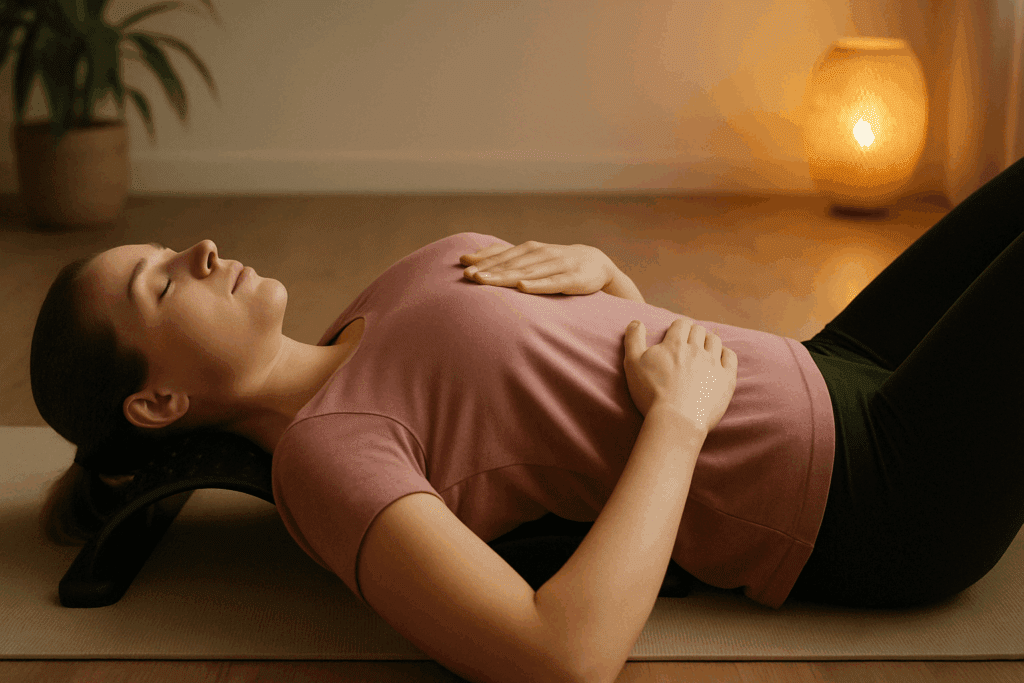
The Role of Breathing Techniques in Amplifying Stretching Benefits
Breath control is not merely a relaxation tool—it plays a critical physiological role in modulating muscular tension and nervous system activity. When using a back stretcher for lower back pain, incorporating diaphragmatic breathing can deepen the stretch and help disengage the sympathetic nervous system, which is often overactive in chronic pain patients.
Inhaling deeply through the nose allows the diaphragm to contract and create internal pressure that stabilizes the spine. As you exhale, the diaphragm relaxes, and the body enters a parasympathetic state, conducive to muscle relaxation and tissue elongation. Practicing slow, rhythmic breathing while on a back stretcher can improve circulation, increase stretch tolerance, and even facilitate emotional release—an often overlooked component of chronic pain.
Advanced users may benefit from combining breath with visualization techniques, such as mentally picturing the vertebrae creating space between them during each exhalation. These mind-body integrations can transform a mechanical stretch into a meditative practice, offering psychological and physical relief.
How to Identify and Avoid Common Mistakes When Using a Back Stretcher
While back stretchers are generally safe, incorrect use can limit their benefits or cause unintended strain. One of the most common mistakes is placing the device too high or too low on the back. The ideal positioning is just beneath the lumbar curve—around the L3 to L5 vertebrae. Placing it in the thoracic region or under the sacrum can create compensatory tension in adjacent spinal segments.
Another frequent error is overextending the spine by using the highest arch level too soon. Doing so can overstretch muscles and ligaments, triggering pain rather than relief. Instead, users should begin at the lowest level and progress gradually as their flexibility and tolerance improve. It’s also important to keep the knees bent and feet flat on the floor during initial sessions to minimize pelvic tilt and lumbar strain.
Avoiding sudden movements or using the device on a hard, slippery surface is also essential. Stretchers should always be used on a yoga mat or carpeted area to prevent sliding and provide cushioning. Paying attention to these small details can significantly improve safety and effectiveness.
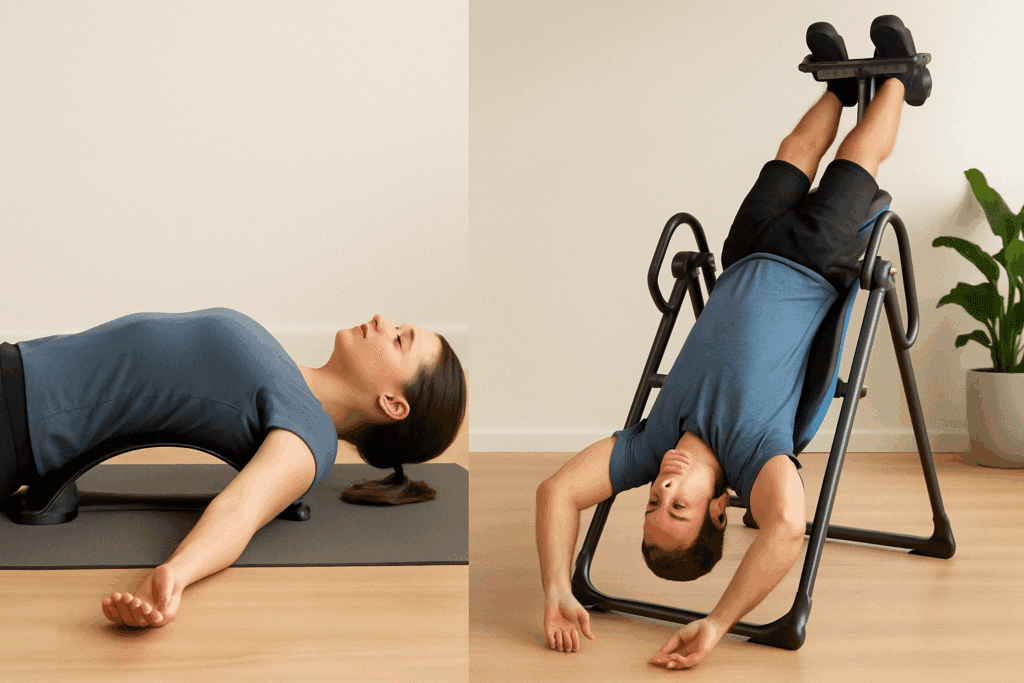
How Back Stretchers Compare to Inversion Therapy
While both back stretchers and inversion therapy aim to decompress the spine, their mechanisms and risk profiles differ significantly. Inversion tables rely on gravitational force to elongate the spine by suspending the user upside down or at an inverted angle. This method can produce dramatic decompression effects but also carries increased cardiovascular and vestibular risks, particularly for those with high blood pressure, glaucoma, or inner ear issues.
Back stretchers offer a gentler, more accessible alternative. Because they operate passively and without inversion, they can be used by a broader range of individuals, including seniors and those with balance concerns. Moreover, the intensity of the stretch is more controllable and can be easily modified through arch adjustments or session duration.
While inversion therapy may provide faster relief for some, the best back stretcher offers a lower-risk, more sustainable option for long-term use. For individuals who are unsure which approach is best, consultation with a physical therapist or physician can help determine which tool aligns best with their condition and goals.

Choosing the Best Back Stretcher for Lower Back Pain: Key Considerations
The best back stretcher is one that matches your specific spinal needs, body type, and personal preferences. One of the most critical considerations is the level of support and firmness provided by the device. Some stretchers are made of rigid ABS plastic and provide a more intense stretch, while others are constructed with foam padding for greater comfort during extended use. Both types have their benefits, depending on the user’s pain threshold and mobility limitations.
Another key factor to evaluate is adjustability. Devices that offer multiple arch levels allow users to customize the intensity of the stretch, making them suitable for beginners and more experienced users alike. Adjustable models can be especially helpful for those recovering from injury or gradually increasing their spinal flexibility. Additionally, the width and length of the stretcher should accommodate your body frame to ensure even support and prevent awkward positioning.
User-friendly design is also crucial when selecting a back stretcher. Features such as a non-slip base, ergonomic contours, and portability can enhance the overall user experience and encourage consistent use. Some models include acupressure points or massage nodes that stimulate circulation and target muscle knots, adding an extra layer of therapeutic value.
Scientific Evidence Supporting Back Stretchers for Back Pain Relief
Although clinical studies specifically examining back stretcher devices are limited, a growing body of evidence supports spinal decompression and passive stretching for back pain relief. Research published in peer-reviewed journals has shown that spinal decompression can reduce intervertebral disc pressure, improve range of motion, and decrease pain intensity in patients with herniated discs, sciatica, and chronic lower back pain.
One randomized trial found that individuals using spinal traction devices reported significant reductions in lumbar pain and disability scores compared to control groups. Other studies emphasize the benefits of lumbar extension exercises and targeted stretching, which are mimicked by the action of a well-designed back stretcher. While these devices are not a replacement for medical care, they can serve as a valuable part of a comprehensive pain management strategy.
Incorporating a Back Stretcher into Your Daily Routine
For optimal results, using a back stretcher for lower back pain should become part of a regular self-care routine. Many individuals find that 5 to 10 minutes per day on the device is sufficient to produce noticeable relief. The key is consistency and mindfulness—allowing your body to relax gradually into the stretch without forcing or straining.
Timing can also play a role in effectiveness. Some users prefer morning sessions to alleviate stiffness upon waking, while others benefit from evening use to decompress the spine after a long day of sitting or physical exertion. Incorporating breathwork and mindful awareness while using the stretcher can further enhance relaxation and reduce the sympathetic nervous system response, which is often heightened in those with chronic pain.
It is essential to listen to your body’s cues and begin with the lowest intensity level, especially if you are new to spinal stretching. Over time, as flexibility improves, users may gradually increase the arch level or add complementary practices such as yoga, Pilates, or resistance band exercises to further enhance spinal mobility and core stability.
Integrating Nutrition and Hydration for Optimal Spinal Health
Although stretching tools directly target the musculoskeletal system, they work best when supported by adequate hydration and nutrition. Intervertebral discs are composed largely of water and require consistent hydration to maintain their shock-absorbing properties. Dehydration can exacerbate spinal compression and limit the efficacy of decompression tools.
Anti-inflammatory foods such as leafy greens, fatty fish, turmeric, and berries may help reduce systemic inflammation, thereby enhancing tissue recovery after stretching. Magnesium, a mineral involved in muscle relaxation, can be especially beneficial for those dealing with muscle spasms or tightness.
Pairing use of a back stretcher with proper hydration and a nutrient-rich diet ensures that the body has the internal resources needed to repair tissue and adapt to mechanical interventions. This comprehensive strategy underscores the importance of addressing back pain through multiple interconnected pathways.
Safety Considerations When Using a Back Pain Relief Stretcher
Despite their potential benefits, back stretchers must be used with caution, particularly for individuals with certain medical conditions. People with severe osteoporosis, spinal fractures, or significant scoliosis should consult with a healthcare provider before using these devices. Those with acute injuries, such as herniated discs or nerve impingement, should also receive medical clearance before beginning any decompression regimen.
Improper use—such as staying on the device too long, placing it incorrectly, or using it on an unstable surface—can exacerbate pain or cause additional strain. It is essential to follow the manufacturer’s guidelines and consider speaking with a physical therapist or chiropractor to ensure correct positioning and technique. A gradual approach, coupled with professional oversight when needed, will help users reap the full benefits without undue risk.
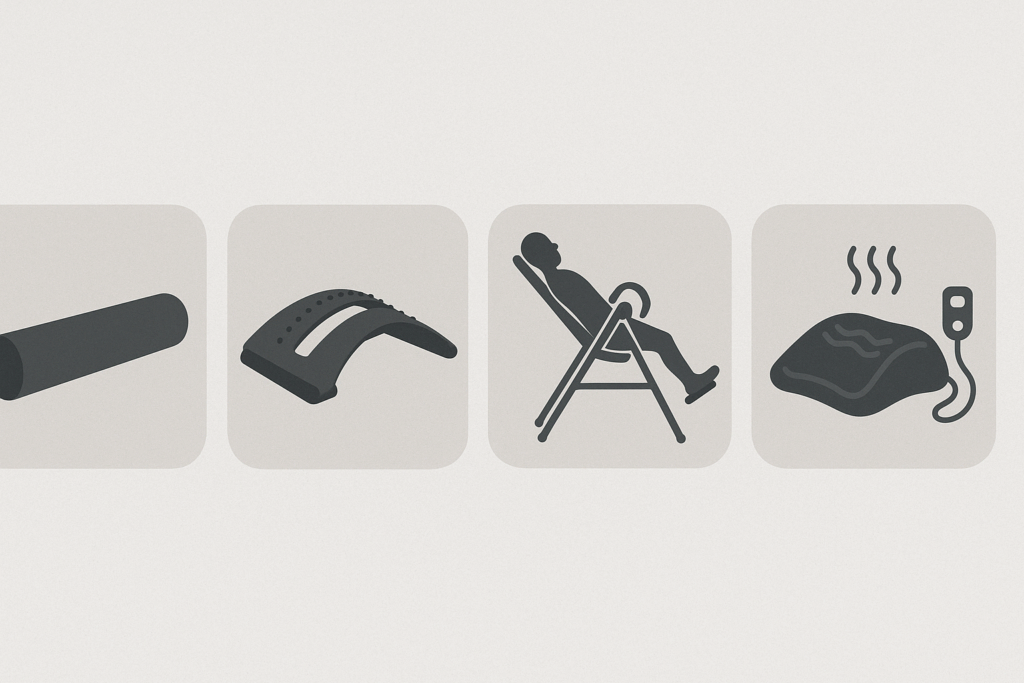
Popular Types of Back Stretchers and Their Unique Benefits
There is no one-size-fits-all option when it comes to the best back stretcher for lower back pain. Different models cater to different needs, and understanding their unique features can help narrow your choices. Foam-based stretchers are often the most comfortable and suitable for beginners. Their gentle contouring supports the natural curve of the spine and offers a mild decompressive effect.
Hard plastic arch stretchers, on the other hand, offer a more intense stretch and are typically adjustable. These are ideal for users looking to gradually increase lumbar flexibility or address more persistent tension. Some advanced models come with built-in acupressure nodes, vibration massage settings, or heat therapy functions—each offering additional layers of relief through sensory stimulation and increased circulation.
Inversion stretchers and decompression benches represent another category of spinal stretching tools. While these are generally larger and more expensive, they can offer profound decompression for individuals with more advanced back issues. However, they require greater care in use and are best adopted under professional guidance.
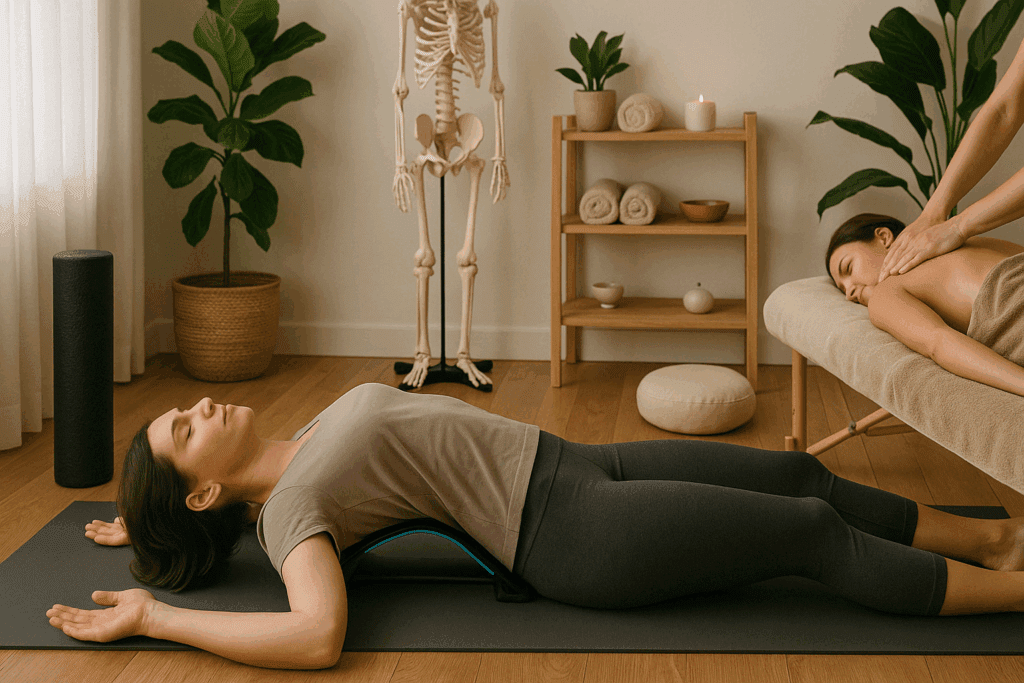
Integrating Stretchers with Other Therapies for Holistic Relief
A back stretcher should be viewed not as a standalone cure, but as part of a broader, holistic approach to back pain relief. Pairing regular use with other therapies such as massage, acupuncture, physical therapy, or chiropractic adjustments can amplify results. For those with muscular imbalances or postural issues, corrective exercises targeting the glutes, hip flexors, and core muscles are essential.
Mind-body techniques such as mindfulness meditation, progressive muscle relaxation, and breathing exercises can further enhance the effectiveness of a back stretcher by addressing the psychosocial dimensions of pain. Chronic pain is rarely just physical—it often involves emotional stress, anxiety, and behavioral patterns that reinforce tension. By creating a comprehensive plan that addresses these multiple dimensions, individuals can move beyond temporary relief toward lasting recovery.
Long-Term Benefits of Using a Back Stretcher for Lower Back Pain
When used consistently and correctly, a back stretcher for lower back pain can produce a variety of long-term benefits. These may include improved posture, greater spinal flexibility, reduced reliance on pain medications, and enhanced overall quality of life. As spinal alignment improves, many users also report better sleep, more efficient movement patterns, and increased confidence in daily physical activities.
The best back stretcher can even serve as a tool for injury prevention by helping maintain spinal integrity and decompressing joints regularly. By promoting a more balanced distribution of mechanical forces throughout the body, back stretchers reduce the likelihood of future strains and sprains, especially in individuals who perform repetitive tasks or maintain static postures for extended periods.
Feedback from users often highlights the importance of patience and realistic expectations. Relief may be gradual, and consistent application over weeks or months is often needed before dramatic results are seen. Nonetheless, for those who remain dedicated and use the device properly, the outcomes can be transformative and long-lasting.
How to Evaluate User Reviews and Expert Recommendations
With so many options on the market, navigating customer reviews and expert opinions can be overwhelming. When assessing which device may be the best back stretcher for your lower back pain, look for detailed feedback from users with similar body types or conditions. Pay attention to reports about durability, ease of use, comfort, and actual pain relief outcomes.
Expert recommendations from physical therapists, orthopedic specialists, or chiropractors can add another layer of confidence in your selection process. These professionals can help interpret how the device might affect your specific spinal mechanics and whether it complements or contradicts your current treatment plan. Certifications, FDA registration, or independent testing data may also be useful indicators of product quality and safety.
Purchasing from reputable brands and vendors with clear return policies is equally important. Trying the device in a controlled setting—such as a clinic, store, or demonstration event—can give you valuable insights into how it interacts with your body. While online reviews can offer general guidance, there is no substitute for firsthand experience when it comes to your spinal health.
What to Expect During Your First Few Weeks of Use
It’s common for users to experience mild soreness or discomfort during the initial sessions on a back pain relief stretcher, particularly if their muscles are tight or their posture has been compromised for a long time. This is often a normal part of the adjustment process, as the spine and surrounding tissues begin to adapt to the new positioning.
During the first week, limit sessions to five minutes once or twice a day, and always perform a light warm-up beforehand, such as gentle stretching or walking. This prepares the muscles and nervous system for decompression and minimizes the risk of strain. Hydration is also important, as decompression can stimulate blood flow and lymphatic drainage, which benefit from adequate fluid intake.
Over time, as comfort increases, sessions can be extended or paired with rehabilitative exercises and postural drills. Documenting your progress in a journal or app can help identify patterns and improvements, reinforcing motivation and adherence. Remember, the goal is not to rush results but to build a foundation for long-term relief and spinal health.
Frequently Asked Questions: Back Stretchers for Lower Back Pain Relief
1. Can a back stretcher help with pain caused by sitting all day at a desk?
Yes, a back stretcher for lower back pain can be particularly effective for people who spend long hours seated. Prolonged sitting places compressive forces on the lumbar spine, often leading to disc dehydration, muscle shortening, and restricted blood flow. A back stretcher offers passive decompression, which counters these effects by gently realigning the spine and releasing tension from the muscles that become overly tight during extended sitting. To maximize benefits, users can incorporate stretching routines that focus on the hip flexors and hamstrings, two muscle groups that contribute to postural imbalances. When used consistently, the best back stretcher for lower back pain can not only alleviate discomfort but also improve spinal resilience during sedentary workdays.
2. How does a back stretcher differ from a traditional lumbar support pillow?
While lumbar support pillows are designed to provide cushioning and encourage proper posture while sitting, a back stretcher for lower back pain offers dynamic traction and extension. The key distinction lies in functionality: support pillows aim to maintain spinal alignment, whereas back stretchers actively elongate the spine. The best back stretcher promotes decompression and can even assist with mobility improvement over time. Incorporating both tools into your routine can be beneficial—using a lumbar pillow during the day and a back pain relief stretcher during recovery periods in the morning or evening. Each has a role to play in a comprehensive back health strategy, but stretchers go further in addressing long-term tension and stiffness.
3. Are there specific stretching techniques to use while lying on a back stretcher?
Yes, there are ways to enhance the effects of a back stretcher for lower back pain through intentional movement and muscle engagement. One advanced technique involves controlled pelvic tilts while lying on the stretcher, which can help stabilize the sacrum and target deep core muscles. Another approach is to extend the arms overhead and engage in diaphragmatic breathing, which promotes relaxation and helps lengthen the thoracolumbar fascia. These techniques are particularly useful when using the best back stretcher for lower back pain, as they engage the body’s natural stabilization systems. Users may also experiment with rotating the knees gently side to side to mobilize the lumbar spine and improve fluid dynamics around the vertebral discs.
4. Can athletes or weightlifters use a back stretcher to improve recovery? Absolutely—many athletes and fitness enthusiasts use a back stretcher for lower back pain relief as part of their post-training recovery regimen. Intense physical activity often leads to axial loading of the spine, especially in strength sports like powerlifting or Olympic lifting. A back pain relief stretcher helps reverse this loading by promoting disc rehydration and relaxing tight spinal muscles. The best back stretcher options for athletes often feature adjustable intensity levels, allowing for progressive decompression tailored to muscular tension. Incorporating the device post-workout can reduce delayed onset muscle soreness (DOMS) and prepare the spine for subsequent training sessions by improving flexibility and alignment.
5. Is it safe to use a back stretcher every day?
In most cases, daily use of a back stretcher for lower back pain is safe and even encouraged, provided the device is used correctly and the individual does not have contraindicated medical conditions. The key is moderation—starting with five to ten minutes per session and gradually increasing time as the body adapts. Daily use of the best back stretcher supports cumulative benefits such as improved posture, decreased stiffness, and greater spinal mobility. That said, individuals with acute injuries, recent surgeries, or spinal instability should consult a healthcare professional before establishing a routine. By using a back pain relief stretcher mindfully and with appropriate guidance, users can make it a safe, long-term component of their wellness plan.
6. What should I look for in a high-quality back stretcher for chronic pain conditions?
For those managing chronic pain, selecting the best back stretcher involves several important considerations. Comfort is paramount—look for a model with ergonomic curvature and memory foam padding if hypersensitivity is an issue. Stability is also crucial, especially for users with mobility challenges, so prioritize models with a non-slip base. Some back pain relief stretcher options offer additional features like heat therapy, massage nodes, or vibrational settings, which may provide enhanced relief for those with long-standing discomfort. Choosing a stretcher that offers multiple arch settings also allows users to adapt their routine over time. Chronic pain management requires tools that are not only effective but also gentle enough to avoid triggering flare-ups.
7. Are there psychological benefits to using a back stretcher regularly?
Surprisingly, yes. Regular use of a back stretcher for lower back pain can have positive effects on mental well-being. The device promotes stillness and deep breathing, both of which activate the parasympathetic nervous system—a key player in stress reduction. Many users describe a meditative or calming experience when lying on the best back stretcher, making it a valuable tool not just for physical but also emotional decompression. Chronic pain is often associated with anxiety or depression, and creating a daily ritual around self-care can offer a sense of control and grounding. As part of a holistic approach, a back pain relief stretcher can support both mind and body in the journey toward long-term recovery.
8. What are some innovative trends in the development of back stretchers?
The back stretcher market is evolving rapidly, with innovation focused on customization and technological integration. Some of the newest back pain relief stretcher models include smart sensors that provide real-time feedback on posture and pressure distribution. Others offer Bluetooth connectivity and guided audio sessions for breathwork or spinal mobilization. Hybrid designs that combine stretching with dynamic massage or localized heat therapy are gaining traction as well. The best back stretcher models in development increasingly prioritize user adaptability, allowing individuals to fine-tune the angle, firmness, and functionality for a personalized experience. These advances promise more precise relief and greater user engagement, making spinal care more effective and accessible than ever.
9. Can a back stretcher help prevent future back injuries?
Yes, prevention is one of the most valuable long-term benefits of using a back stretcher for lower back pain. By improving spinal alignment, enhancing flexibility, and maintaining healthy disc spacing, a back stretcher can reduce the likelihood of muscle strains, ligament sprains, and disc injuries. The best back stretcher supports muscle balance and posture correction, two key components in injury prevention. When paired with core strengthening exercises and ergonomic workplace adjustments, it becomes a powerful preventative tool. Individuals in physically demanding jobs or sports can especially benefit from integrating a back pain relief stretcher into their routine as a proactive measure.
10. How do I know if a back stretcher is working for me?
Tracking progress is essential when using a back stretcher for lower back pain to ensure it’s having a positive impact. Signs of improvement may include increased flexibility, reduced morning stiffness, improved posture, and fewer flare-ups during daily activities. However, the best back stretcher will also contribute to a general sense of ease and mobility throughout the day—not just while using the device. Keeping a journal or using a health-tracking app can help you document trends and adjust usage accordingly. If pain worsens or new symptoms appear, it’s crucial to seek medical advice and reassess whether the back pain relief stretcher is appropriate for your condition.
Conclusion : Making the Right Choice
Choosing the best back stretcher for lower back pain is an investment in your health, comfort, and functional independence. With so many models and features to choose from, the key lies in understanding your own body, seeking expert guidance when necessary, and adopting a patient, consistent approach to use. A back stretcher is not a miracle cure—but when integrated thoughtfully into your daily wellness routine, it can offer meaningful and lasting relief.
Ultimately, the best back stretcher is the one that supports your goals and adapts to your body over time. By combining regular use with complementary therapies and a holistic understanding of pain, you can transform this simple tool into a powerful ally for long-term spinal health. Whether you’re managing chronic discomfort or seeking to prevent future issues, a well-chosen back pain relief stretcher can become a cornerstone of your journey to a healthier, more mobile life.
Was this article helpful? Don’t let it stop with you. Share it right now with someone who needs to see it—whether it’s a friend, a colleague, or your whole network. And if staying ahead on this topic matters to you, subscribe to this publication for the most up-to-date information. You’ll get the latest insights delivered straight to you—no searching, no missing out.
Further Reading:
7 Top Back Stretchers to Crack & Stretch Your Back for Lower Back Pain

